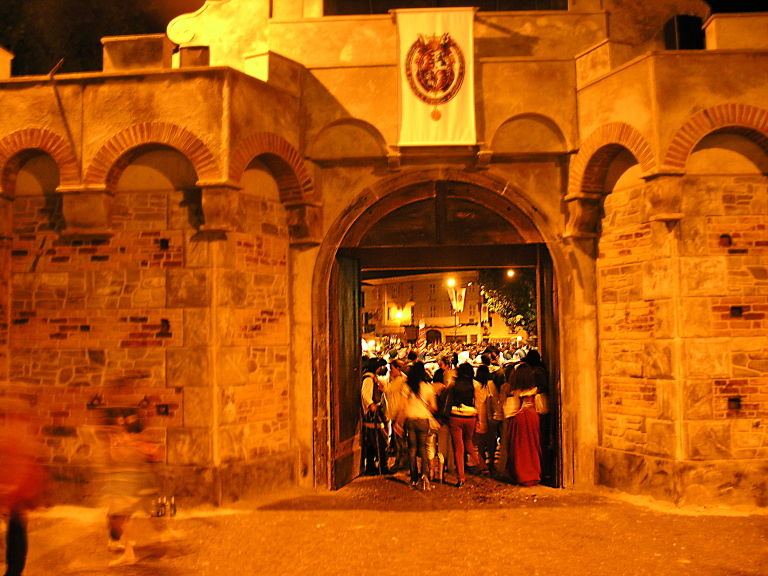Bruno
- June 2008
You
can enlarge the photos in this page by clicking the mouse cursor on
the picture, but you may have to enable popups to make this work. You
can close the new window to return to the main page.
We invited
the St Agnes coffee club again this June.
Montemagno
We hadn't appreciated that there were hill towns to the North of Asti, until we set of on a day of visiting to Montemago, Cocconato (billed as having a good outlet store, but also home to Bava who make the delicious Alteserre white wine), and - for Piet and me - Vezzolano. We reached Montegmagno's cemetery and war memorials first.
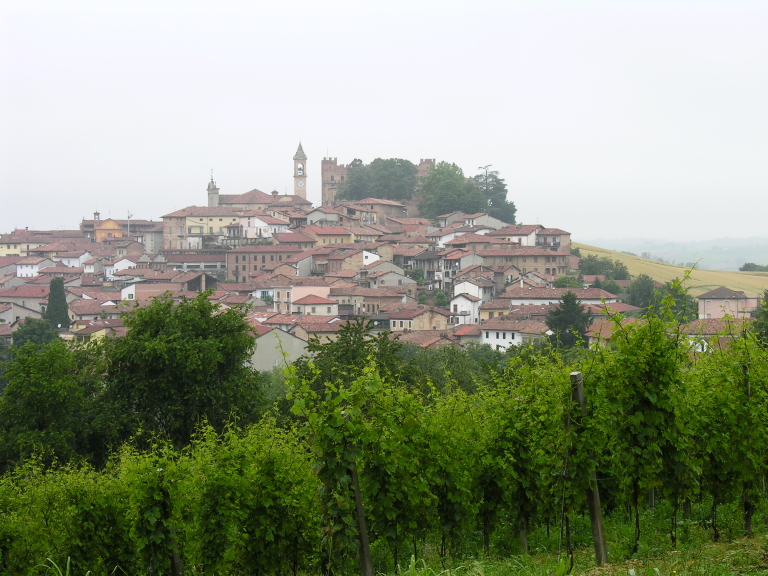
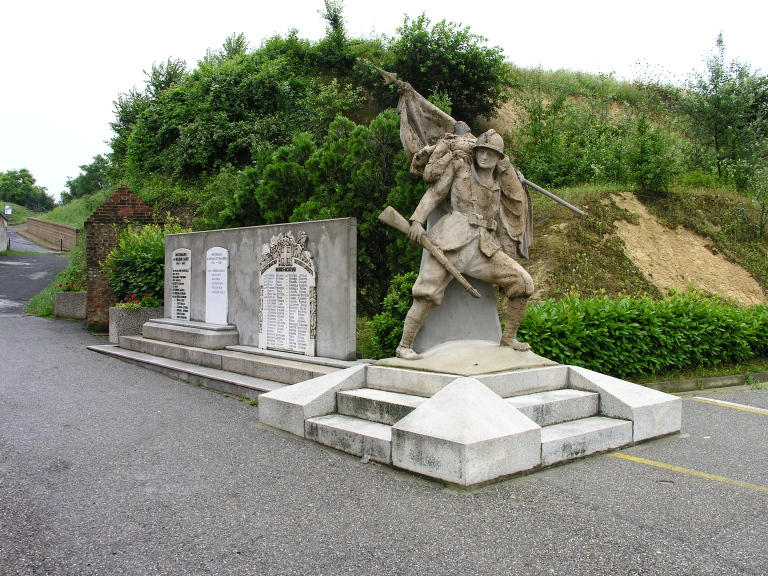
It was interesting that, in contrast to England, most of the family names on the 1915-18 memorial were different from those on the 1939-45 one
We drove into the town to see whether the castle was open. First, a street full of houses with open sided haylofts under their roof
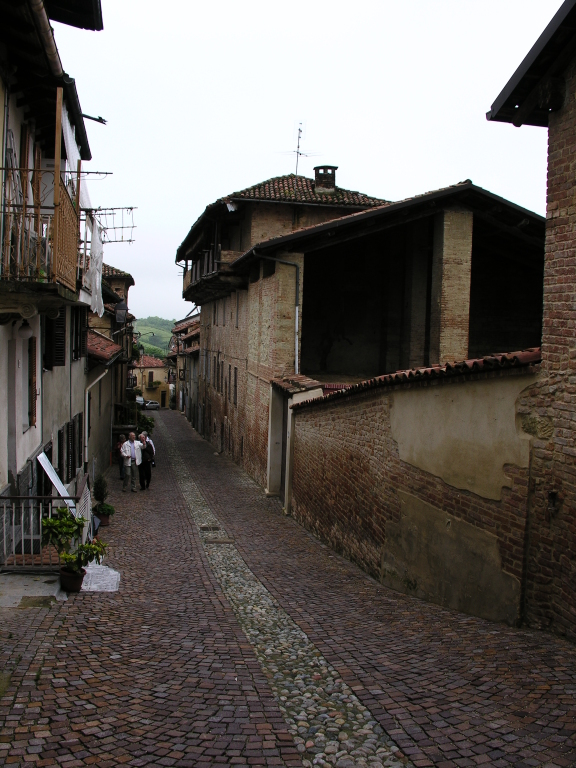
The castle was not open to the public.
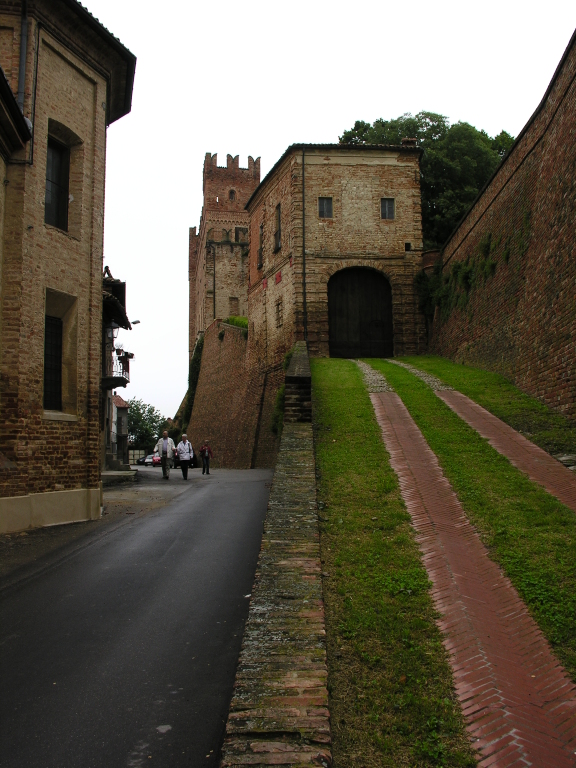
Altogether a forbidding place
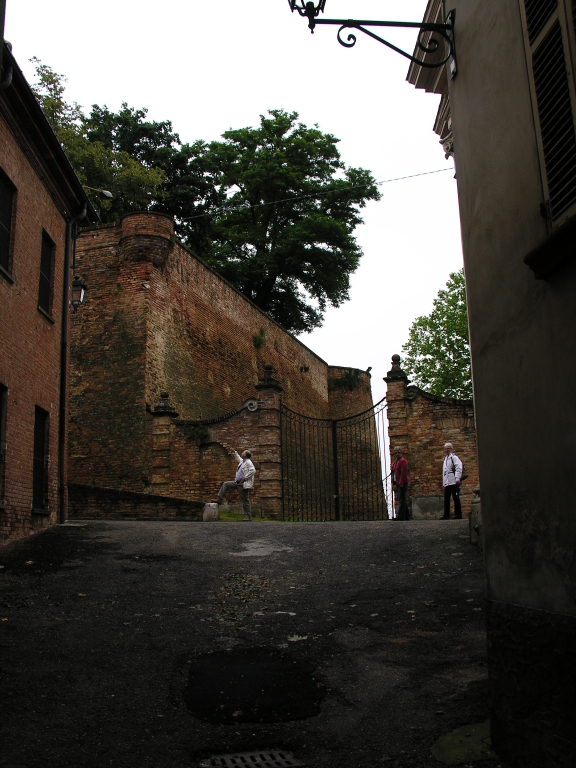
In the shadow of the castle was a church, which turned out to be closed, and behind that, another that was being restored.
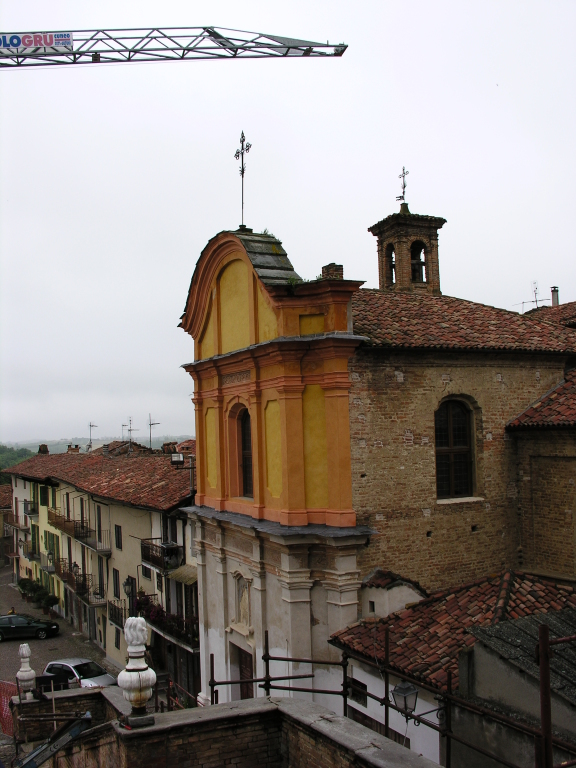
One imagines there must have been a third church somewhere in the town where people could actually go to mass.
We were enchanted by the visible civic pride invested in the town hall
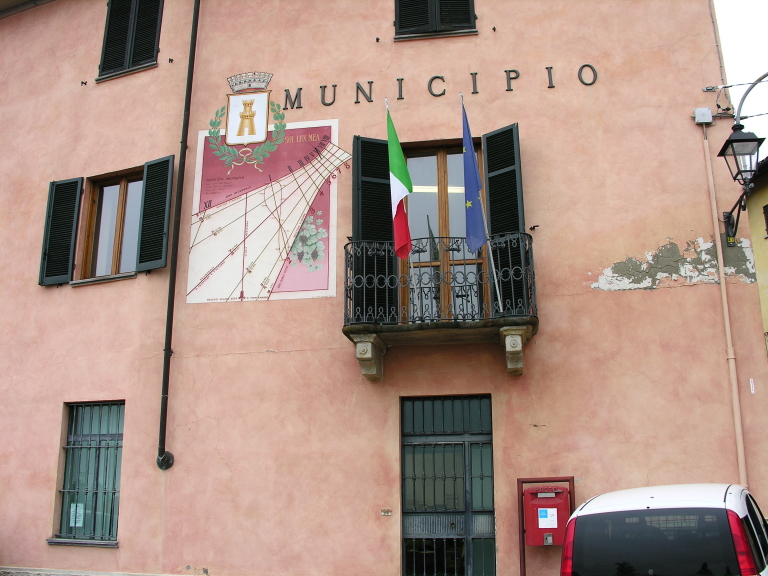
Vezzolano
After lunch at Cocconato, more memorable for the discovery of Alteserre than for the food, we left the shoppers at the Outlet, and headed cross country for Vezzolano. This abbey dates from the 11th Century, and belonged to the Regular Canons of St Augustine.
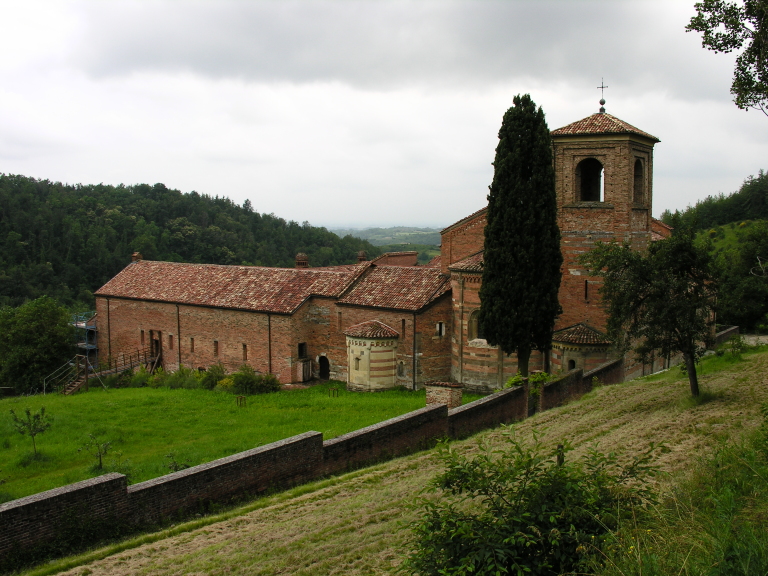
After a period of suppression in the 18th Century, it is now an abbey again. But one can visit.
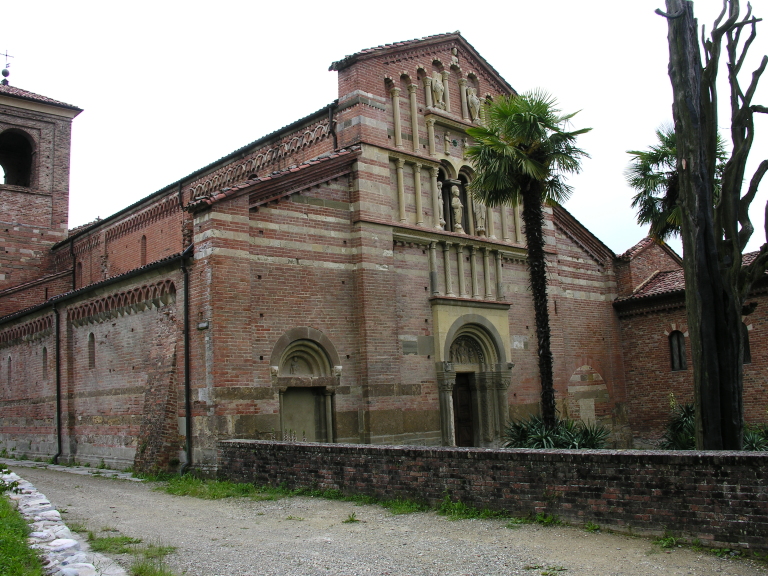
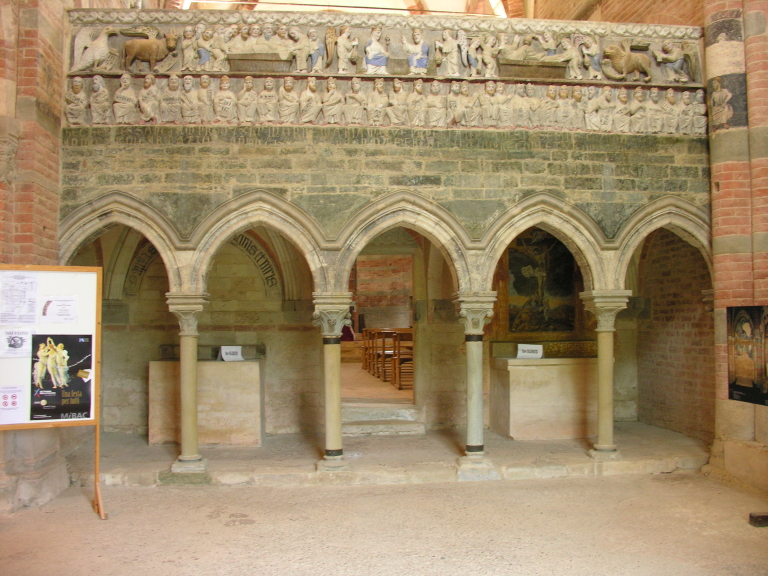
After visiting the abbey, we pushed on to Castelnuovo Don Bosco, to visit Don Bosco's birthplace. Piet had two uncles who were Salesians. This plaque commemorates Don B's mother, and her role in bringing up the future saint.
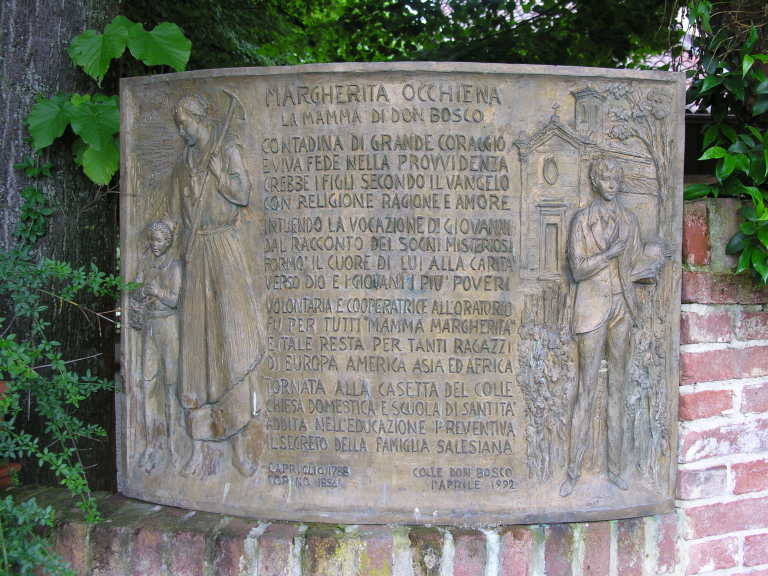
Casale Monferrato
Christine decided to take us to Casale Monferrato, to see whether we could visit the synagogue. Apparently, there was a large community of Jews expelled from Spain and Portugal in the Piemonte, until the war. The synagogue was not officially open to visitors, so I found some other things to photograph, first of all in the Piazza San Stefano. It looks as though it could be the church, or have been the church, but it is just a palazzo.

The Duomo, on the other hand, was open. The nave is a 19th Century structure, but at least it is Romanesque revival, rather than Gothic. I rather admired the pulpit
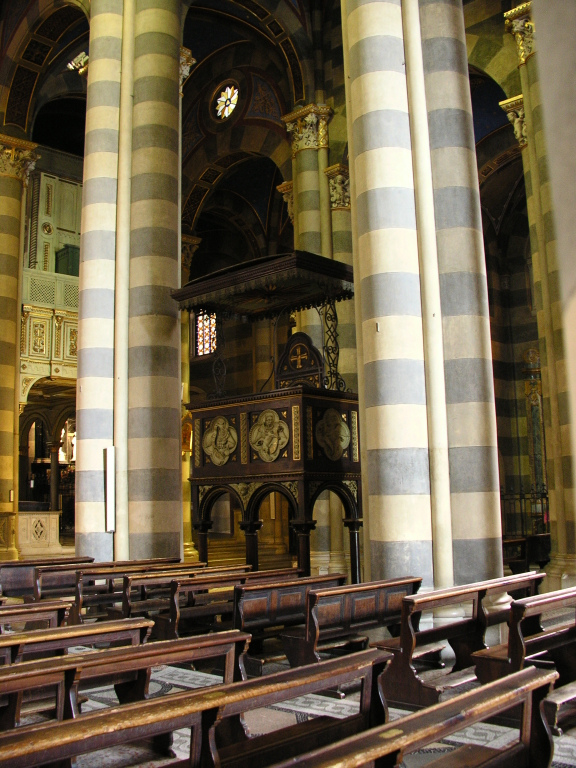
The crucifix hanging over the altar, though, is a genuine 12th Century article.
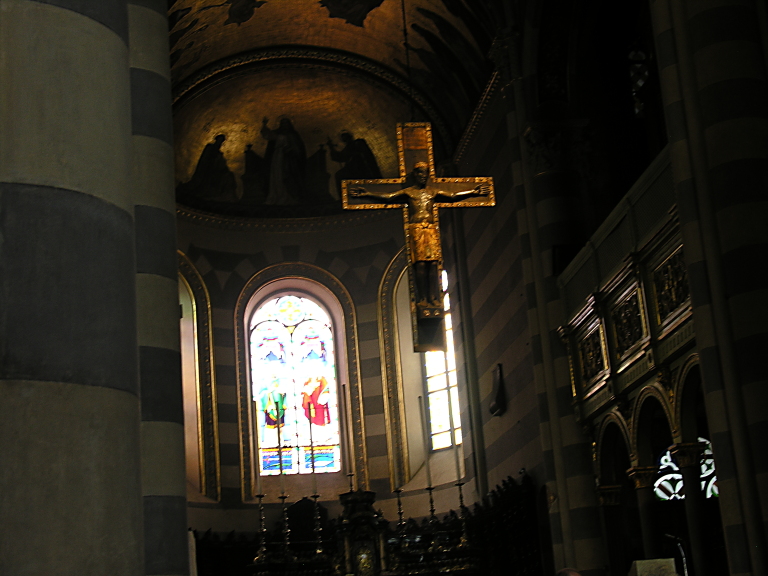
This old church has been converted into a shopping centre, an imaginative repurposing of the existing walls and facade.
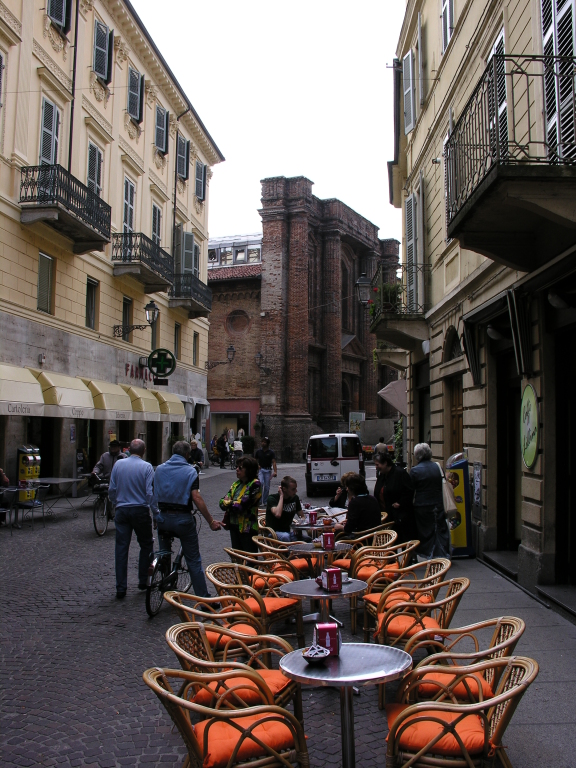
The Tiglione and Tanaro Valleys
Our next outing was to Costigigliole, near where the river Tigliole rises, and the picturesque villages on either side of the Tanaro. This is the castle at Costigliole, now an Italian cooking school for foreigners.
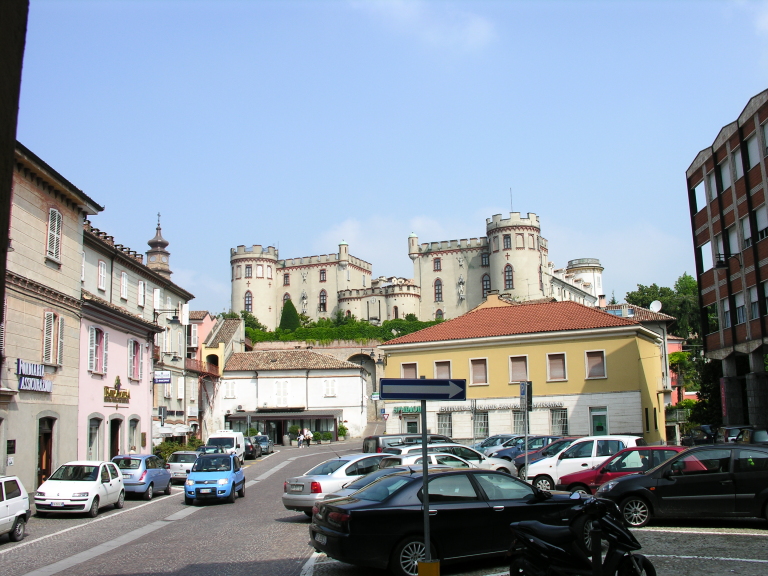
The fortifications seem largely ornamental, in stark contrast to those at Montemagno.
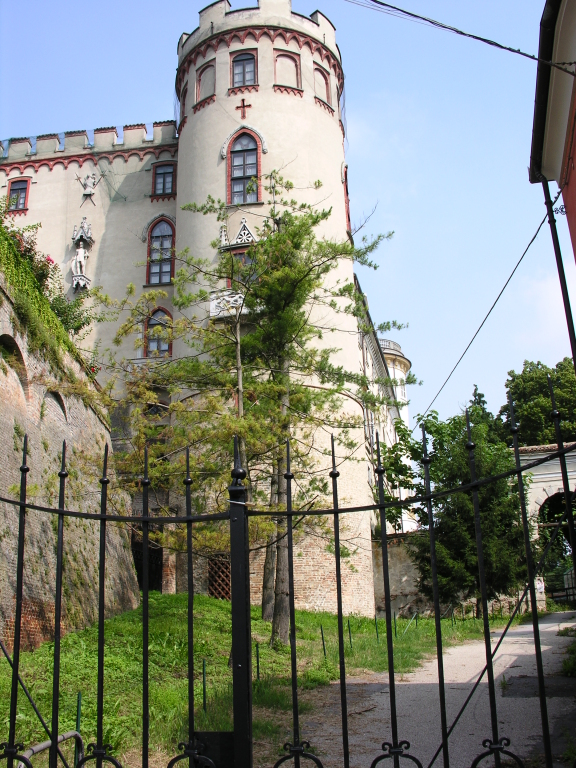
I especially liked this balcony, or bay window
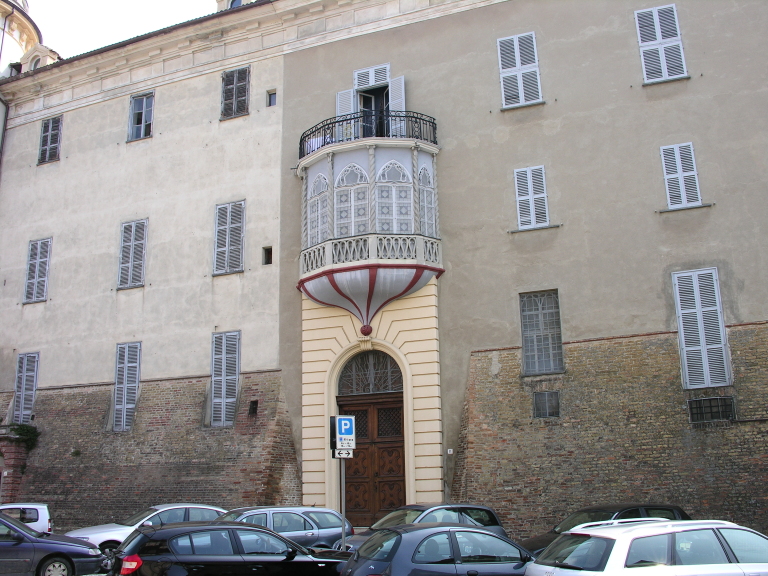
Some of the old fortifications have been remodelled into houses it must be hard to furnish with off-the-shelf furniture.
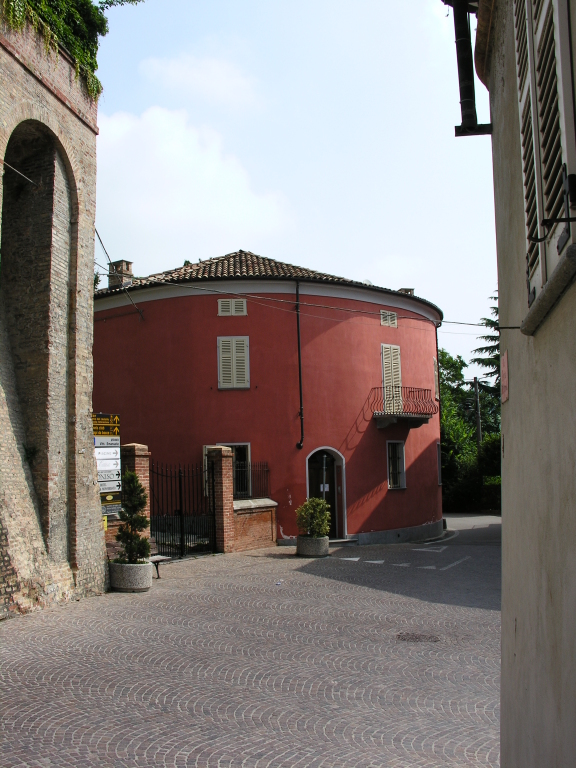
We drove across the valley to Govone, once a royal palace, now the town hall. It was in restauro. So we couldn't go inside.
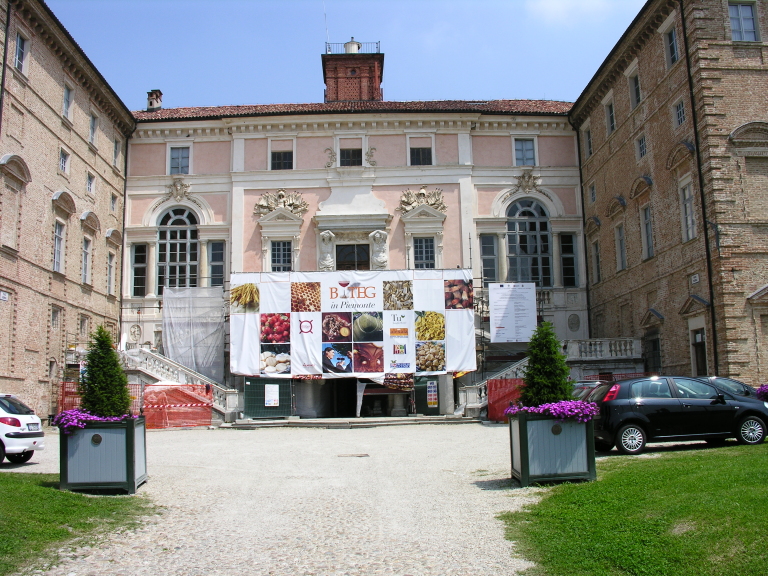
But there were some very beautiful, if hazy, views across and up the valley.

After lunch, we drove to Grinzane Cavour, the estate which Cavour managed before he got into national politics. This is his bed (the mattress would have been full of corn cobs, we had learned on an earlier visit). Our Italian friend Giuseppe says he remembers sleeping on a mattress full of corn leaves as a child, so perhaps our guide had got the translation wrong.
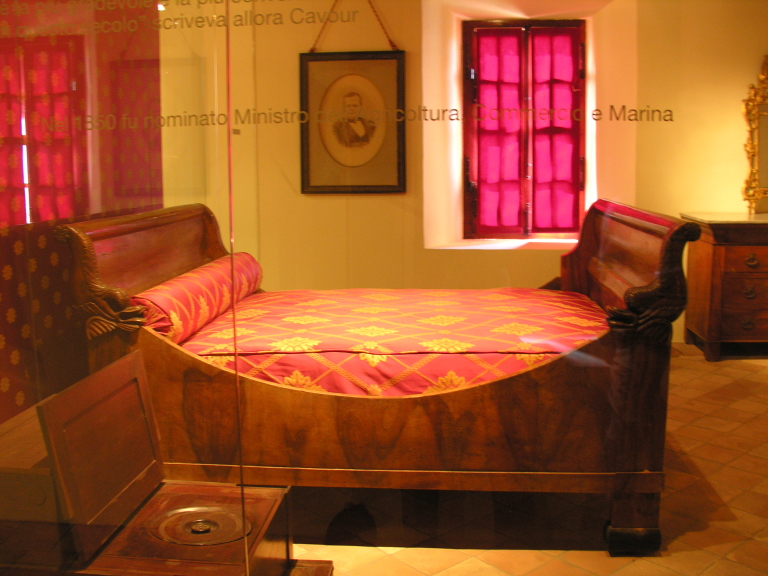
And this is the other furniture in his study.
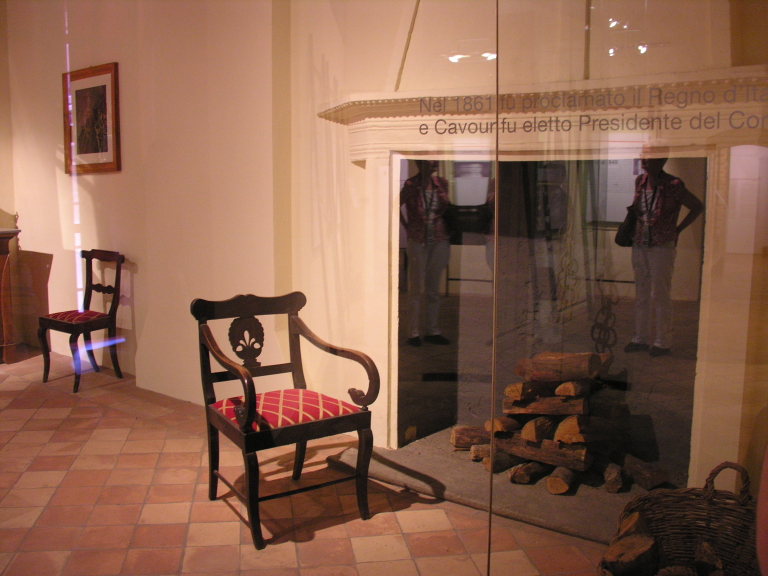
After the visit, we admired the view of the rolling vineyards from which Barolo and Barbaresco come.

Palazzo Crova
This palazzo now houses Nizza's enoteca. We gathered our strength for another tasting.
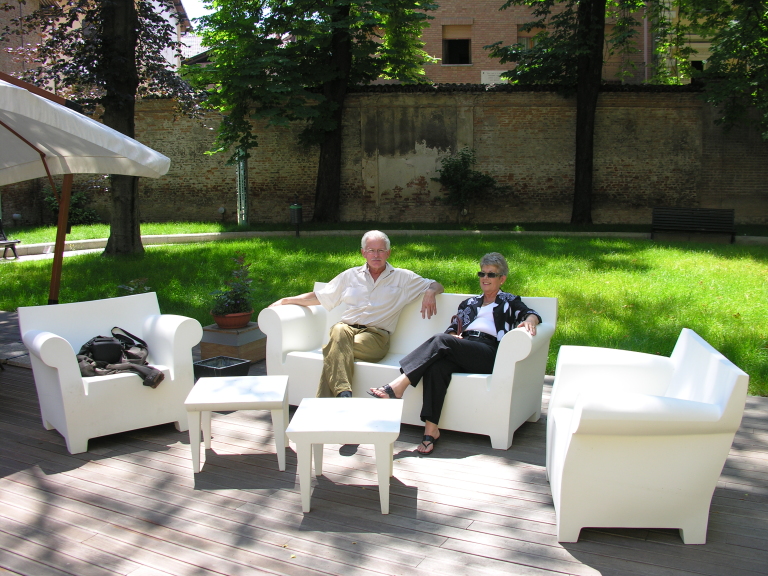
Clemens was very pleased with the hat he had bought in the market.
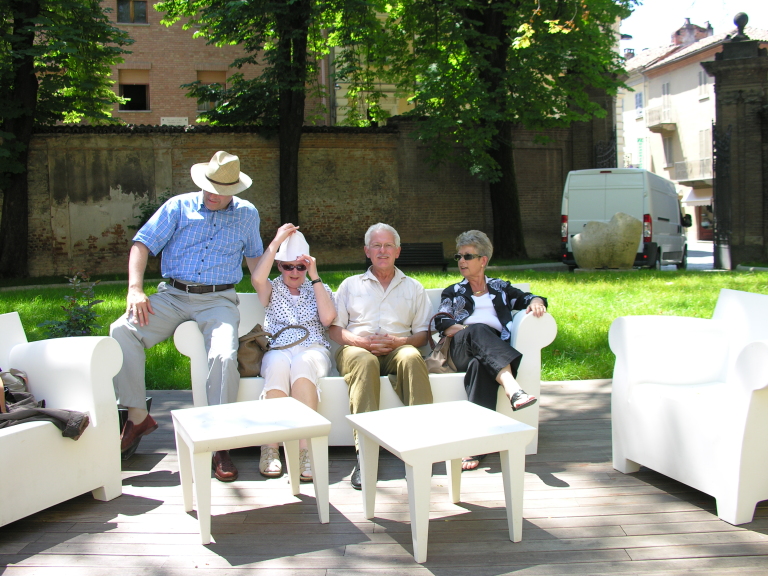
Wine purchased, we headed home for a barbecue by the pool. MC was thouroughly shopped out.
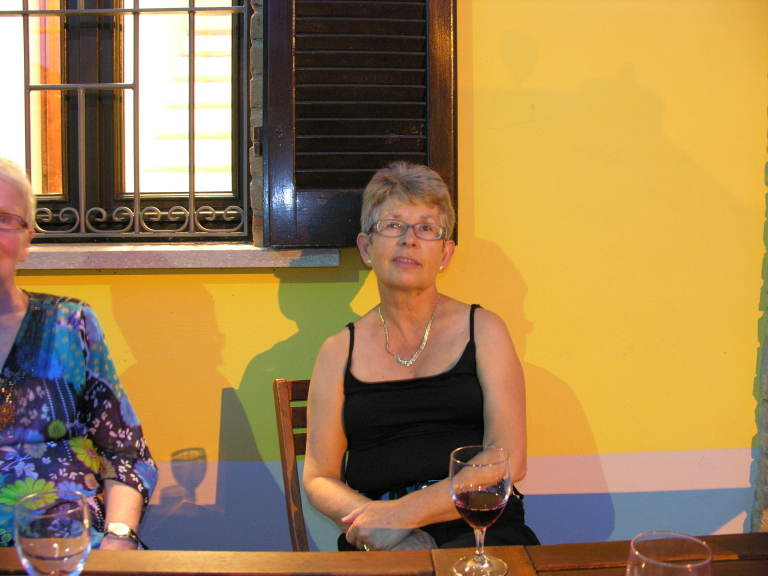
Siege
of Canelli
After two failures, I was in the right place to attend the commemoration of the siege, which took place in 1613. We arrived much too early, while the Italian chapter of the Sealed Knot were still getting their gear on, and the townspeople trying to work up an appetite with their passsegiata. They have the right approach to discplining unruly children in Italy!
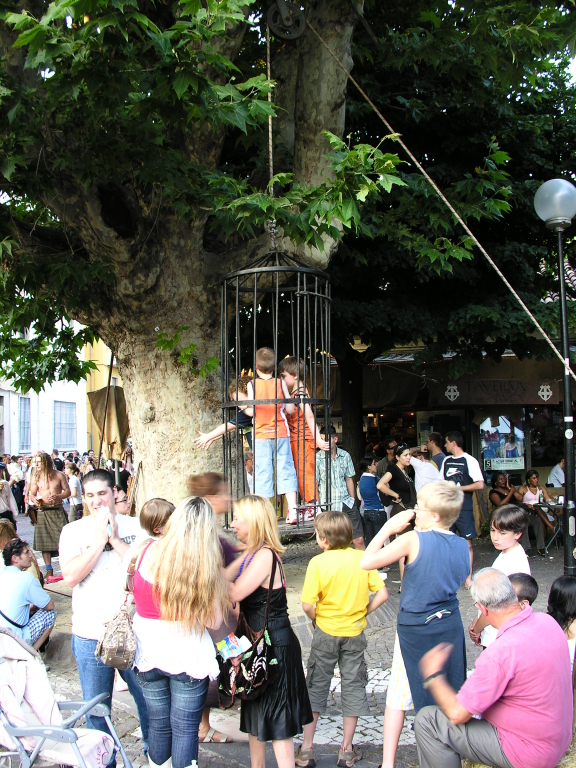
The passegiata went on through dusk
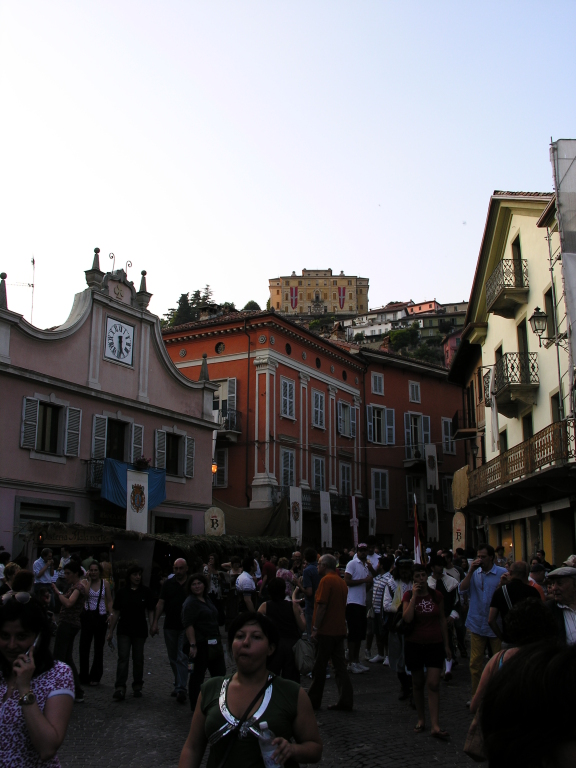
We climbed up as near the castle as one can get, and I took this photo of the valley across towards Castelboglione
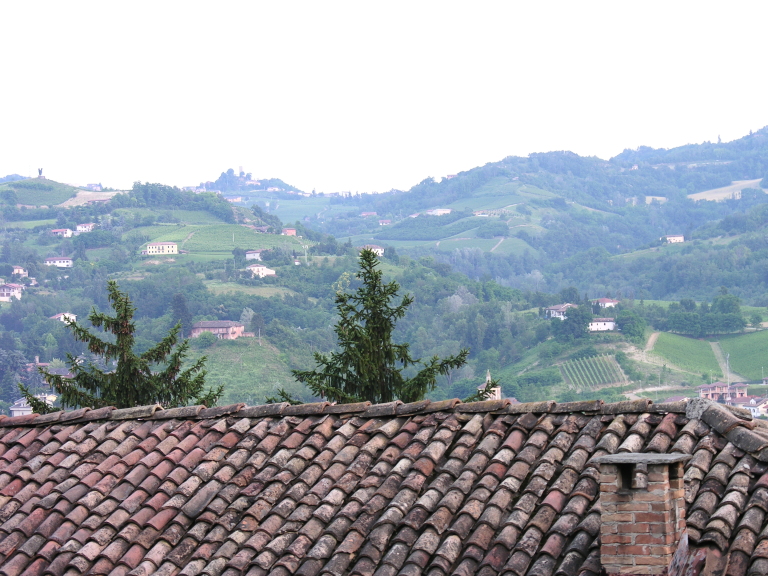
By the time we got back down (actually, only half way), the natives were busily trying to eat all the town's rations before anyone else got them.
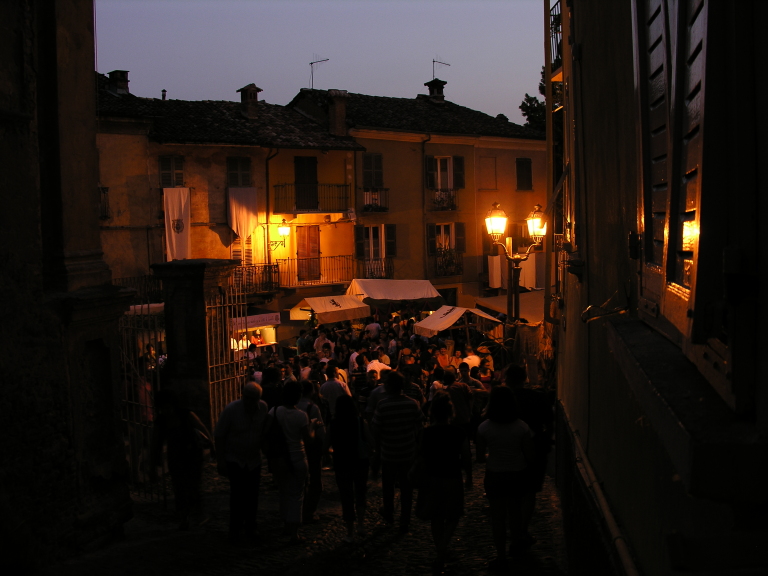
At the bottom, the Piazza Gancia was full of marching bands, and spectators doing very little to get out of their way
Here is a sample
At around 10pm, just as we were ready to go home, the Mantuans turned up to demand the town surrender. There was a good deal of untranslatable slapstick in the Duke's harangue. We decided to call it a night before the mock fire in the Castle started. Our last view of the festivities was the revellers crowded round the town gates. If only the beseigers had known they were made out of papier maché.
